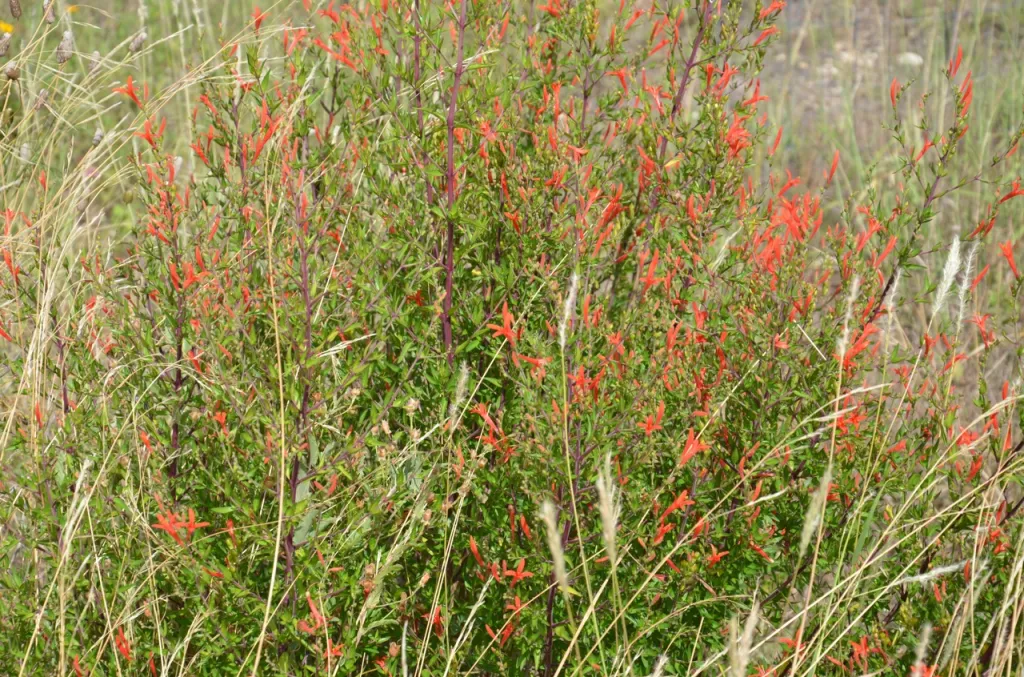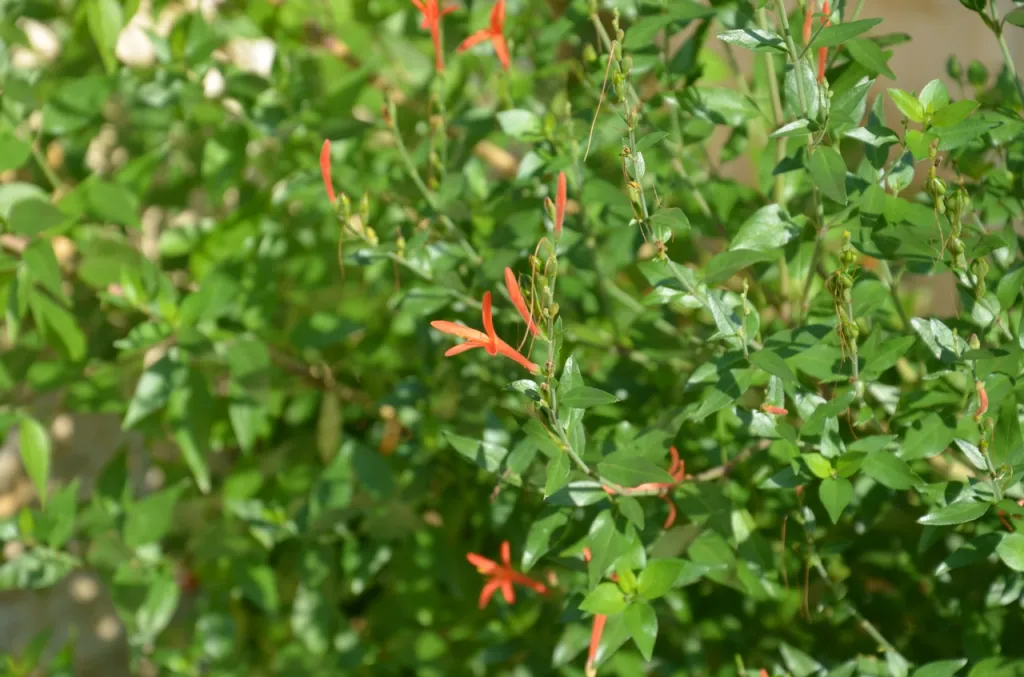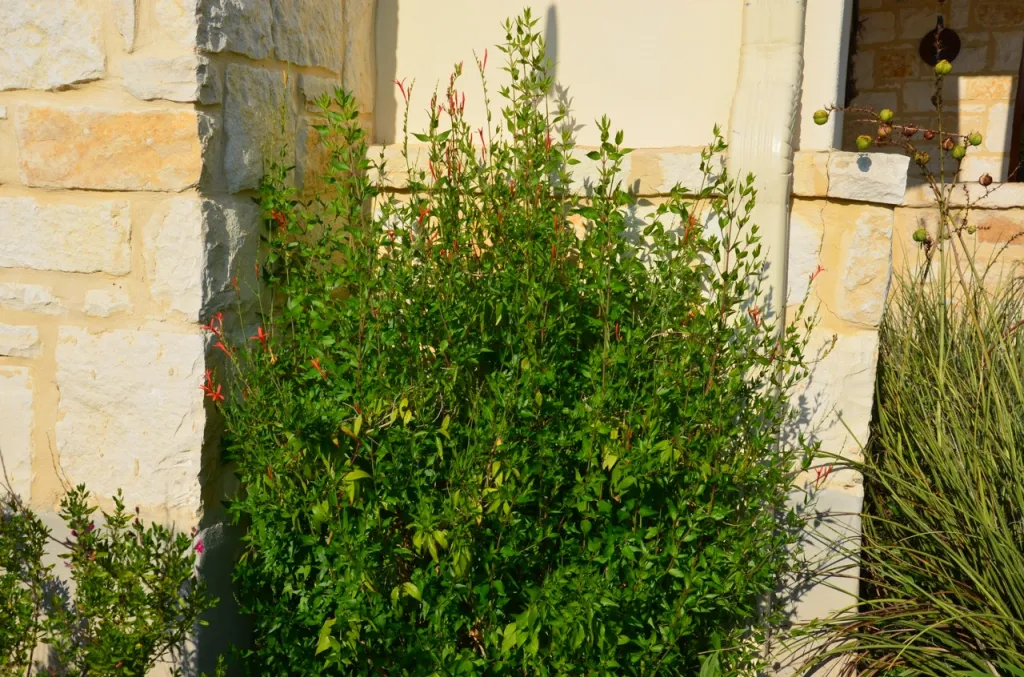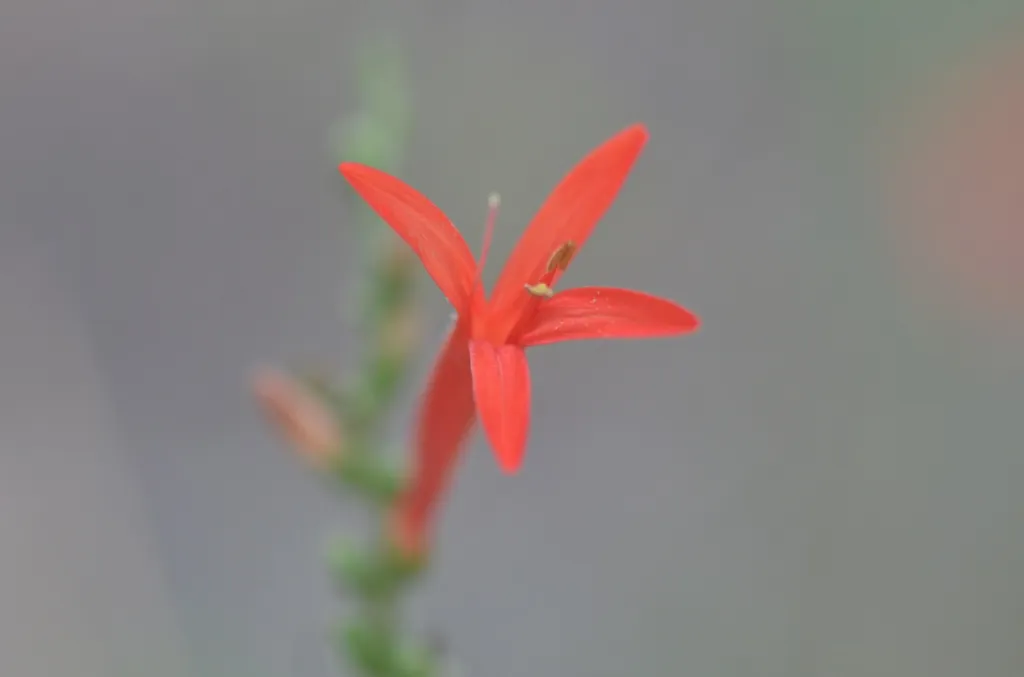By Delmar Cain
It has not been a bad Texas summer. And I hope that in making that statement I do not doom us to an awful September. Yes it has been hot but we have been spared those endless days of 100 degree plus heat that some years bring. And it is Texas after all. It has rained sparingly but also frequently enough to sustain hope that more might come in the fall. Even without more rain, which some of you may have been lucky enough to have gotten, I would say that this summer is a keeper.

September is the beginning of a new season for the NICE program (Natives Instead of Common Exotics) for the Boerne Chapter of NPSOT. The first recommended plant of the month for the new season is flame acanthus (Aniscanthus quadrifidus var. wrightii) also commonly know as hummingbird bush, Wright’s desert honeysuckle and Mexican flame. This native to the Edward’s Plateau, West Texas and northern Mexico is drought tolerant and produces 1 1/2 inch long, bright orange to red tubular flowers from mid summer to frost.
This is not the first time that the Borne Chapter has recommended flame acanthus for the NICE Plant of the Month. It was the plant of the month for September 2006 and Bill Ward wrote an article about it for Native Grown in August 2006. It is always a pleasure to reread Bill’s articles, which can be accessed on the Boerne NPSOT website at: http://www.npsot.org/wp/boerne/. Just go to the Publications heading, click on the articles by Bill Ward and scroll down to the article for August 2006. His article is just as relevant today as it was in 2006.

While you are at the website you can also find planting instructions for flame acanthus under the Plant of the Month heading.
In his article Bill notes with a word of caution that flame acanthus is a prolific performer and may show up at other places in your yard. On the dry, rocky hillside where we live that is music to my ears. I am always interested in a native plant that may migrate to a spot, which has thus far frustrated my attempts to “improve”. I accept such a result as a reminder that Nature has a perverse sense of humor. I also accept it as a vindication that, like me, Nature does not require plants to stay in neat compartments.
My good friend, Kip Kiphart, recently offered me a flame acanthus, which had migrated to another area of his wonderful butterfly garden. Kip’s son helped him improve the soil for the area and it grows beautiful healthy plants whose blooms attract large numbers of butterflies and hummingbirds. The flame acanthus had appeared and was not needed in the area.

The poor plant has now wound up in my yard with some unimproved soil and only rocks and a persimmon bush for companions. Now we will see if this flame acanthus can live up to its reputation as a tough plant that can adapt to most soils. I may even name the plant, “David Copperfield”. Don’t tell Kip since he might experience some remorse on his insufficient background investigation or worse, he may want the plant back.

For those of you who might have an interest, the Native Plant Society of Texas will have its annual symposium in Kerrville at the YO Ranch, October 4-7, 2012. The title for the symposium is “The Texas Hill Country—A Changing Landscape.” The bulk of the educational activities will occur on Friday and Saturday (the 5th and 6th) and will include presentations on different challenges for the Hill Country and for the Texas environment and tours of some public and some privately owned areas, with guides.
You can find out more details by going to the State NPSOT website at: www.www.npsot.org/.
Just click on the Annual Symposium under the Upcoming Events heading. I know that you will find the presentations and tours well worth you time.
